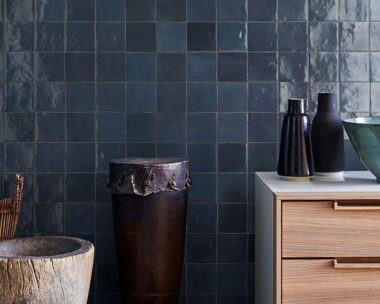There’s nothing quite like a sky-rocketing house market to make you wonder whether your suburban family home would fetch enough to buy you a small (but perfectly formed) apartment, a decent holiday somewhere it isn’t raining and an addition to your languishing nest egg.
Considering Auckland’s average house price is more than the $700,000 mark and a one-bedroom shack fetches half a million, it just about might. And if you live in the big city, all you’ll need to do is buy a bunch of flowers, brew coffee and stuff your son’s underwear under his pillow seconds before the open home starts. But if you live somewhere else and want to sell, a smarten up may be in order. The current Auckland market excluded, getting a house ready for sale is quite a challenge, and getting a garden ready even more so – especially in winter. Tarting up the garden can take days, or even weeks, and might involve a larger outlay than the cost of a bunch of daisies and a packet of fair trade coffee beans.

if the approach to your front door is bland, you can achieve a makeover with bushy plants in pots.
Apart from common sense measures, such as mowing the lawn, weeding the beds and fixing that hole in the fence, there are numerous touches you can add to the outdoors that’ll give your property an edge. Most gardens have dead spots and if your home is on the market, it’s the perfect time to enliven them. And even if it doesn’t sell, you can enjoy the results of your work. A gap between the end of the paving and the beginning of a wall doesn’t need to be full of clods and weeds. Buy a bag of stones or shells, spread it over the area and insert a couple of flat flagstones, or add a piece of driftwood or a colourful pot.It’s a 10 minute, $10 job.

To fill an uninspiring area, choose three reasonably large plants for instant impact and a designer look.
Disguise a messy view or give an area of paving/lawn a focal point with container plants. Find three pots the same and plant with astelias or grasses for a contemporary look, or camellias or daisies for a cottage style. Square pots look smarter than round – it’s a substantial spend to undertake, but you can take them with you.
If there’s an area lacking impact (the path from the driveway to the front door is often a case in point), splash out on three narrow shrubs or young trees, plant them into the ground and edge with contrasting pavers. You’ll get a classy, designer look.
In a spot that cries out for a bit of drama, a single mature tree will have a similar impact. Try a palm in a contemporary garden, or a spreading or weeping tree for that old-fashioned look. Even when the temperatures are down to single figures, it’s still a good idea to present your garden as the ideal space for outdoor living. If your own furniture is packed away or too dreary looking to be on display, beg or borrow an attractive setting, dress the chairs with throws and cushions and the table is ready for lunch or drinks. You won’t want to outlay money on major items such as lighting or water features, but shallow basins of water, perhaps sprinkled with petals and a few candles or oil burners, promote the idea that this is a garden built for entertaining. And if you think it still looks a bit sparse and wintry – cheat. Just before an open home or when prospective buyers are due, chop lush foliage off existing shrubs and trees, cram it into containers and position them to cover up anything that doesn’t look that good. When you’ve finished, you won’t want to sell your home.

First impressions
I’m not sure why, but most houses have dreadful letter boxes – either mean little tin things with crooked, stick-on numbers, or those cumbersome gabled models stained mud brown.
If yours is like the above, replace it. You really don’t want it setting the tone for the rest of the property. Stylish letter boxes aren’t cheap (even awful ones are usually over $75), so you have two choices: Splash out on something you really like, or simply remove and hide the existing letter box on open days. Whatever your choice, make sure there’s not all manner of junk mail spilling out the front when your prospective buyers are due.
Mark your entrance-way with a pillar or simple piece of sculpture and attach brass or wooden numbers. If you’re in the country, a rustic old fence post or agricultural relic will serve to make a statement on your behalf. Make sure it matches the style of the house – a massive concrete plinth won’t work as the introduction to a charming worker’s cottage in a crowded urban street. But make sure it is visible, level and secure, and if there’s time, plant something lush and striking alongside to give it an established look.

Outdoor spaces can still be appealing in winter, provided they’re clean.
Finishing touches
Water blast the slimy decks, mossy outdoor furniture and grubby pavers, but make sure they have time to dry before people arrive – dry spaces are more appealing than wet. Clean out and top up ponds and water features, and add one or two new water plants if required. Roll up hoses, hide gumboots, pack up plastic toys, stash away tools and old building materials and shift the dog kennel around the back. Any cars that don’t fit in the garage, park on the street – not in the driveway or on the lawn. Get rid of any dead plants and either replace, or put the pot out of sight. Finally, spend half an hour with a leaf blower around decks, courtyards and terraces.




